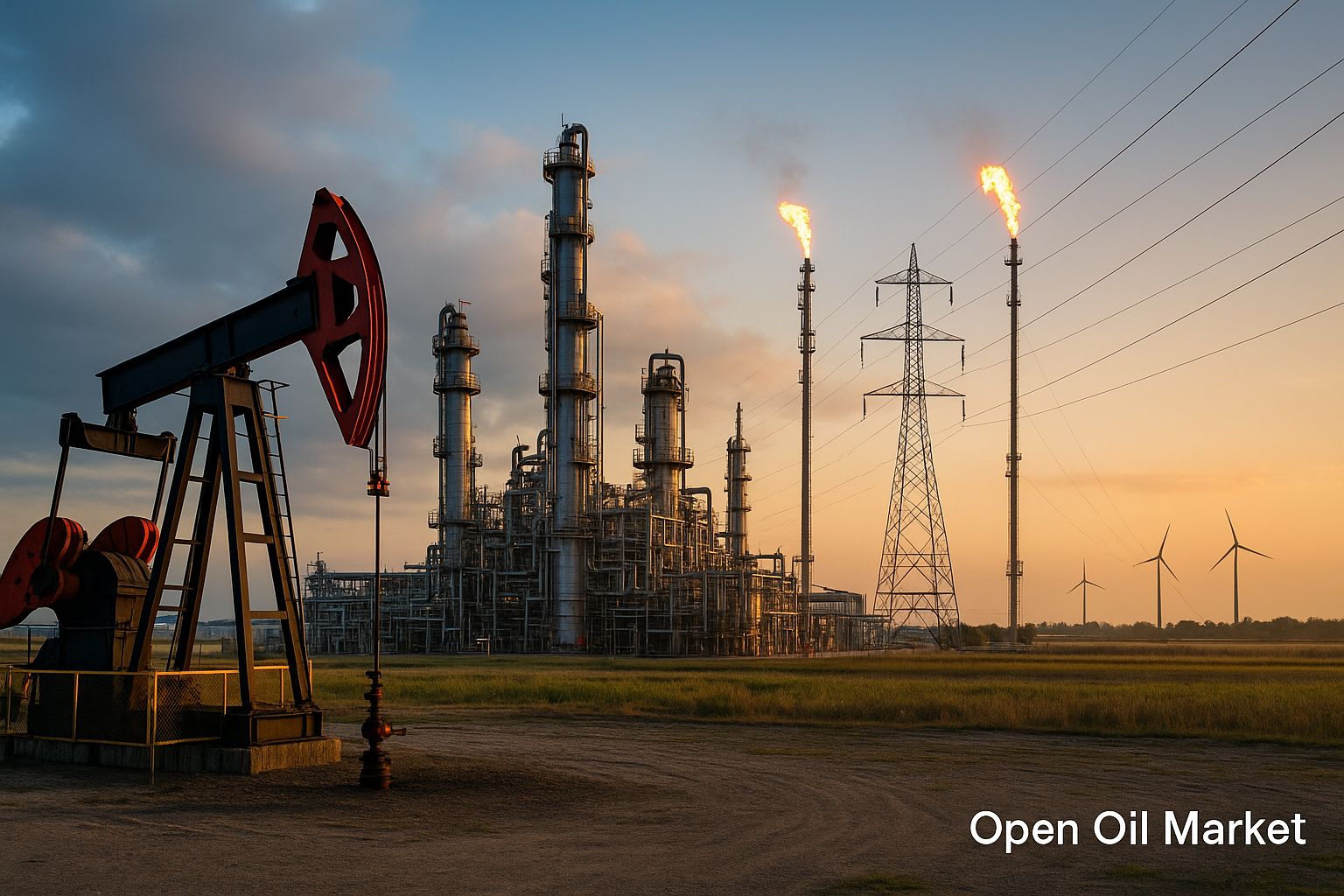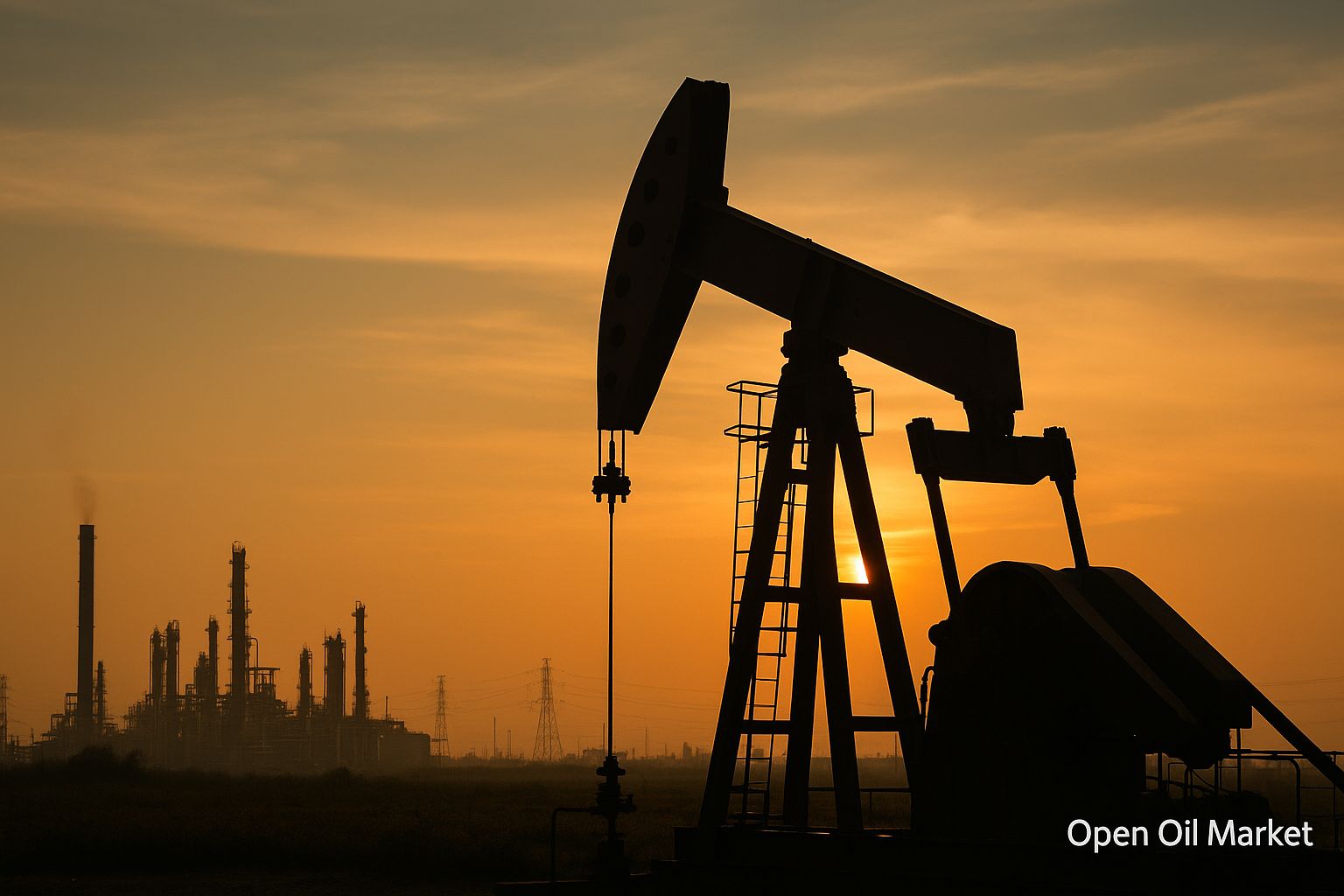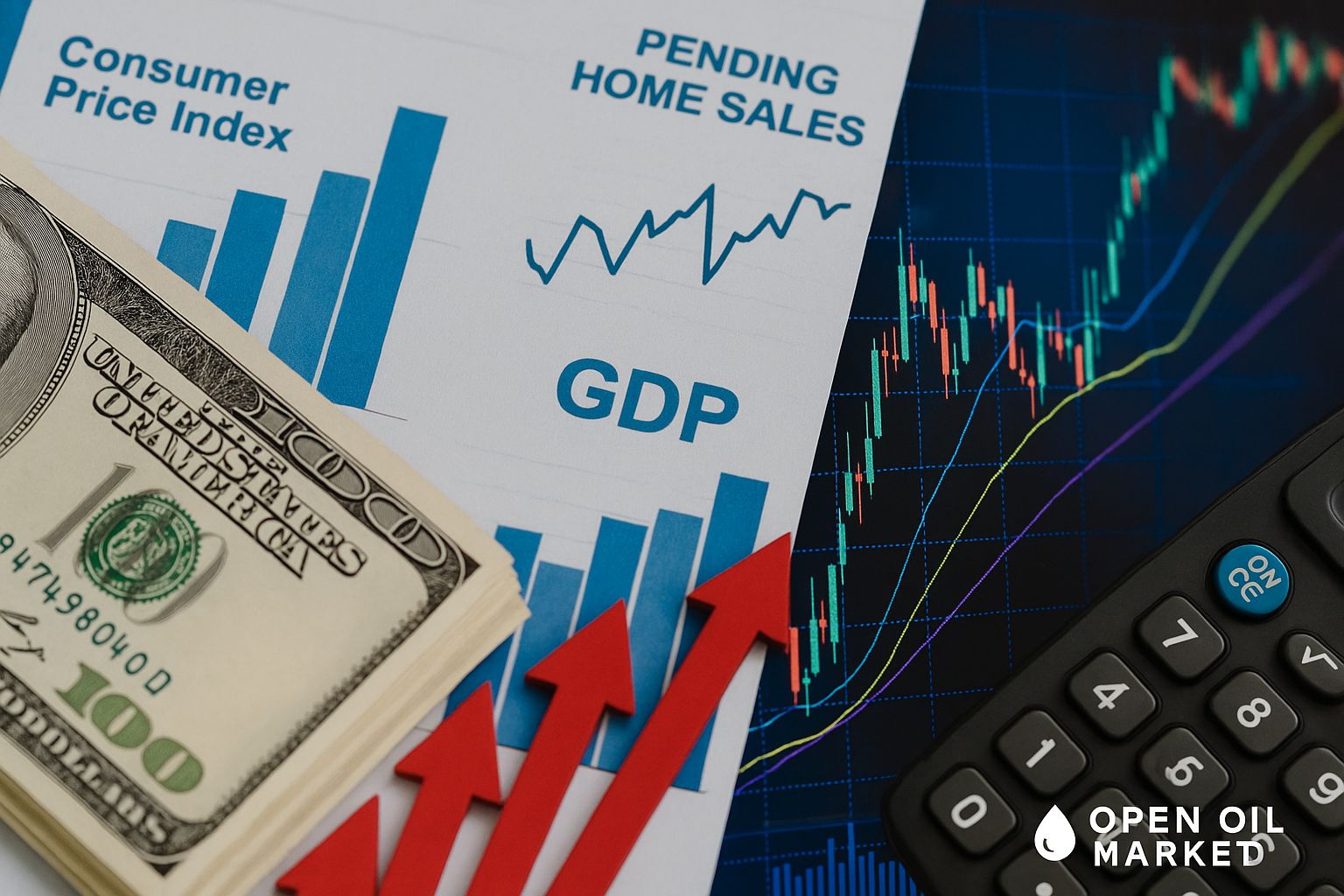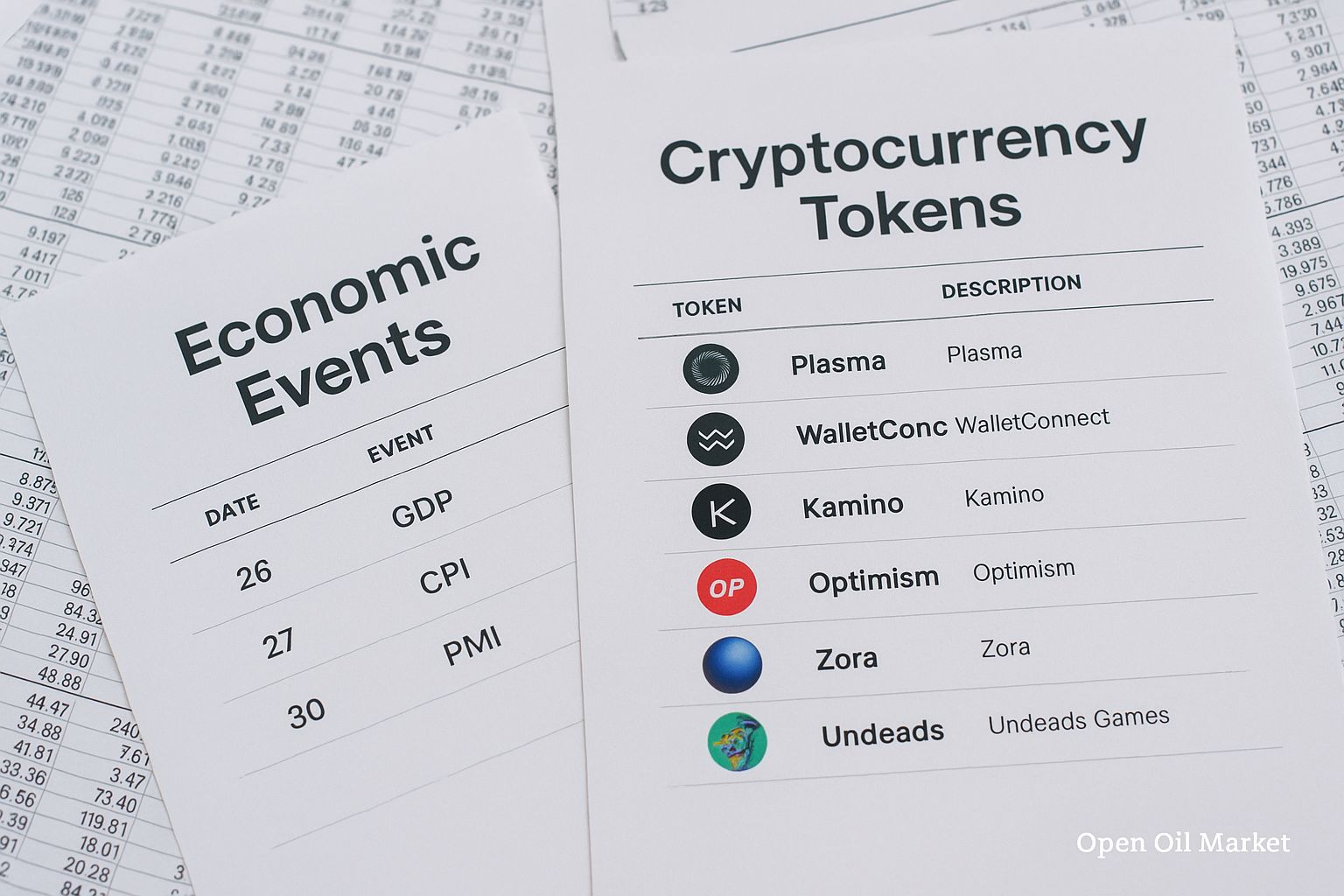
Main Updates in the Fuel and Energy Sector as of September 19, 2025: Prospects of New Sanctions, Dynamics of Oil and Gas Prices, Energy Strategies of China and India, Continued Stabilization Measures in Russia's Fuel Market, Renewable Energy Records, and High Demand for Coal.
Current events in the fuel and energy sector as of September 19, 2025, reflect both the stabilization of commodity markets and ongoing geopolitical pressure. Western countries are preparing new restrictions against the Russian energy sector, maintaining a sanctions policy with no apparent easing. At the same time, the global oil market remains relatively calm: excess supply and moderate demand keep Brent prices around the upper $60 per barrel. The European gas market enters autumn well-prepared—underground gas storage facilities are nearly full, ensuring a high level of energy security and restraining prices. Meanwhile, the largest Asian economies, China and India, continue to actively increase purchases of oil, gas, and coal, steadfastly pursuing their energy security strategies despite external pressure. The global transition to clean energy is gaining momentum: new records in generation from renewable sources are being set, although the resilience of energy systems still requires reliance on traditional resources. Following a recent sharp rise in fuel prices, Russian authorities are extending and tightening measures to stabilize the domestic market—from adjusting the damping mechanism to temporary export restrictions. Below is a detailed overview of the key news and trends in the oil, gas, energy, and commodity sectors to date.
Oil Market: Limited Price Growth Amid Excess Supply
Global oil prices are demonstrating restrained dynamics as the week comes to a close. The benchmark Brent blend is holding steady around $66–68 per barrel, while U.S. WTI is trading in the $62–64 range, approximately 10% lower than year-ago levels. The market has gradually retraced from the peaks of the energy crisis in 2022–2023 and is influenced by several fundamental factors:
- OPEC+ Activity. The oil alliance continues to increase production, gradually lifting previously enforced restrictions. As of October, OPEC+ countries are allowed to add +137,000 barrels per day (following an increase of +548,000 barrels/day the previous month). Despite relatively low prices, key exporters are eager to regain lost market share. Since April, production quotas have risen by approximately 2.5 million barrels/day, further saturating the market. At the recent OPEC+ technical group meeting on September 18–19 in Vienna, delegates discussed methods for assessing maximum production capacities—a step that may precede future quota adjustments. The next full meeting of the alliance's ministers is scheduled for October 5, where the decision will be made whether to maintain current production increases.
- Weak Demand. Global oil consumption is growing much more slowly than in previous years. According to the International Energy Agency (IEA), demand growth in 2025 is expected to be less than 1 million barrels per day (compared to over +2.5 million in 2023). OPEC also anticipates modest consumption increases of +1.2–1.3 million barrels/day. The reasons include a slowing global economy (especially a slowdown in industrial growth in China) and the effect of high prices in previous years that encouraged energy conservation. Additionally, high inflation and strict monetary policies in several countries are restraining demand.
- Rising Stocks Outside OPEC. U.S. commercial oil inventories unexpectedly rose in September, signaling a market surplus is forming. U.S. oil companies are maintaining production near record levels (~13 million barrels/day), and U.S. authorities are not in a hurry to actively replenish strategic reserves to avoid provoking additional demand. Moreover, other non-OECD producers—from Brazil and Canada to African countries—are also increasing production. Saudi Arabia, having finished the summer period of high domestic consumption, sharply increased crude oil exports, reclaiming its market share. Simultaneously, reduced petroleum product exports from Russia have freed up additional volumes of crude oil for the global market.
- Geopolitics and Finances. The sanction standoff between Russia and the West continues to create nerves in the market: a certain "risk premium" remains in prices to account for potential supply disruptions. At the same time, specific diplomatic engagements and negotiations between major powers (for example, the meeting between the leaders of Russia and the U.S. in the summer on Alaska) sustain hopes for a gradual easing of tensions, which in turn limits price growth. Importantly, central bank policies play a crucial role in the financial markets: the U.S. Federal Reserve lowered the base interest rate for the first time this year (by 0.25 percentage points in September), signaling a more dovish stance due to economic slowdown. This has led to a slight weakening of the dollar and temporarily supported commodity prices, including oil. However, concerns about global economic growth rates and excess supply outweigh these factors, preventing significant increases in oil quotations.
In summary, the mentioned factors keep the oil market in a state close to surplus. Prices fluctuate within a narrow corridor without any signs of a sharp rally, but also without fears of a collapse. Many analysts believe that if current trends continue, oil may remain relatively cheap: the average Brent price in 2026 could drop closer to $55 per barrel. However, market participants remain vigilant about unforeseen shocks—such as escalating conflicts in the Middle East or natural disasters that could temporarily disrupt production. In the current balance of excess supply, company and investor strategies are characterized by prudence and caution.
Gas Market: Full Storage in Europe and Price Stability
The gas market is currently focused on Europe, which is confidently preparing for the winter period. EU countries rapidly filled gas storage facilities throughout the summer, reaching over 92% of total capacity by mid-September—substantially above the target level initially set for early November. Near-full gas reserves give the European energy system a strong buffer ahead of the heating season. Consequently, gas exchange prices remain at relatively low levels: futures prices at the Dutch TTF hub are hovering around €30 per MWh (approximately $380 per 1000 cubic meters)—significantly lower than peak values from last winter. This pricing plateau indicates a balance between supply and demand in the European market.
Additionally, a record influx of liquefied natural gas (LNG) from various regions around the world plays a stabilizing role. Following the turbulence of 2022–2023, European importers have diversified their sources of LNG supplies: significant volumes are being sourced from the U.S., Qatar, African countries, and via intermediate traders from Russia. During the summer of 2025, Europe capitalized on relatively low spot prices and decreased competition from Asia to ramp up LNG purchases—European terminals operated at record capacity during the season of weak Asian demand. These measures allowed for accumulating additional gas volumes, enabling them to approach winter without signs of deficit. At the start of the heating season, the European gas market looks robust, and the current price level is comfortable for consumers and industries in the EU.
However, experts warn that this favorable situation may change in the event of an extremely cold winter or an unforeseen reduction in LNG supplies. Europe remains dependent on fuel imports: domestic gas production in the EU is steadily declining, and traditional pipeline supplies from Russia have been minimized due to sanctions and geopolitics. Nevertheless, the accumulated reserves, diversification of LNG sources, and energy-saving measures suggest that even in adverse scenarios of severe deficits, shortages could be avoided. European regulators are also developing new initiatives—from extending the mechanism for joint gas purchases to accelerating the development of renewable energy—to enhance energy security and reduce price volatility in the future.
International Politics: Sanction Pressure Without De-escalation
The geopolitical landscape surrounding the energy sector remains tense. After summer signals indicating readiness for dialogue, there have been no significant breakthroughs. On the contrary, in September, Western allies reaffirmed their commitment to a tough line regarding Moscow. The United States is considering new restrictions against the Russian fuel and energy complex—targeting oil and LNG exporters, as well as companies from other countries that assist in circumventing sanctions. The European Union, having postponed the unveiling of the 19th sanctions package (originally expected on September 17), plans to further refine the measures in conjunction with G7 partners. According to media reports, the European Commission may present a new package on September 22 or early October, expecting to target major Russian oil and gas companies and banks, as well as for the first time focusing on third countries: overseas oil refineries in India and China processing Russian oil could come under sanctions, in addition to discussing stricter visa regulations for Russian citizens and other economic pressure measures.
Moscow, in turn, is trying to adapt to the reality of sanctions. Russian energy resource exports are quickly redirecting from Europe towards Asia and the Middle East. Volumes of oil supplies are increasing primarily to India, China, Turkey, as well as several African states—often at discounts relative to global prices to retain buyers. According to Russian officials, despite the sanctions, federal budget revenues from oil and gas exports remain at an acceptable level due to sufficiently high raw material prices and a weak ruble exchange rate. However, the sanction pressure significantly impacts the technological development of the sector: access to modern equipment for the exploration of hard-to-reach fields is limited, and foreign investors are withdrawing from new projects, posing long-term risks for the Russian oil and gas sector.
Direct threats to infrastructure are also exacerbating the situation. In recent weeks, drone attacks on Russian fuel and energy complex facilities have increased. For instance, on the night of September 18, drones attacked a large petrochemical plant in Bashkiria, causing a fire, while several days earlier, oil refineries in the Leningrad and Saratov regions had come under attack. Although Russian air defense intercepts most drones, the occurrence of such incidents creates market uncertainty and forces authorities to prioritize energy supply security. Overall, the sanctions conflict and military risks remain key factors of uncertainty for global energy. Markets are pricing in the prolonged nature of the standoff, and energy companies account for these risks in their planning. Even minor signals of easing relations—such as a pause in the escalation of sanctions or local agreements—could temporarily improve sentiment, but currently, such movements are limited in scope.
Asia: India and China Strengthening Energy Security
The Asian giants—India and China—continue to play a crucial role in global energy resource markets, offsetting declining Western demand. These countries are simultaneously increasing imports and developing their own production, aiming to meet their growing economic needs and insulate themselves from external shocks. Their policies combine pragmatism in supplier selection with active domestic investment in energy, significantly impacting global energy flows.
- India. Despite Western pressure, New Delhi clearly indicates that a sharp reduction in imports of Russian hydrocarbons is unacceptable. Russia remains one of India's largest oil suppliers, covering a significant portion of the Indian market's needs. According to traders, Indian refineries continue to purchase Urals oil from Russia at a discount of about $4–5 to Brent quotations, helping to control raw material costs. As a result, India not only maintains a high level of purchases of Russian oil but also increases imports of petroleum products from Russia (including diesel) to satisfy domestic demand. At the same time, the government is accelerating programs to reduce dependence on imports in the strategic perspective: initiatives are underway to boost domestic oil and gas production. In August, Prime Minister Narendra Modi announced the launch of a large-scale program to explore deep-sea shelf reserves—state corporation ONGC has already begun drilling ultra-deep wells in the Andaman Sea in hopes of discovering new fields. These steps bring India closer to its goal of increasing energy self-sufficiency, although over the coming years, the country will still depend on external supplies for about 80% of its oil and 40% of its gas.
- China. The world's second-largest economy is increasing purchases of energy resources while simultaneously investing in expanding domestic production. Beijing has not joined sanctions against Moscow and is taking advantage of the situation by purchasing Russian oil and gas on favorable terms. Officially, in 2024, China imported over 212 million tons of oil and around 246 billion cubic meters of natural gas, surpassing previous year's figures. In 2025, imports continue to grow, although at a slightly slower pace due to a high base. Meanwhile, Chinese oil and gas companies are setting their own production records: during the first eight months of 2025, China produced about 145 million tons of oil (+1.5% YoY) and 175 billion cubic meters of gas (+5% YoY). Domestic production covers part of the growing demand, but far from entirely: experts note that China will continue to import around 70% of its consumed oil and 40% of its gas in the coming years. In an effort to strengthen long-term energy security, Beijing is expanding cooperation with Moscow. Purchases of pipeline gas via the "Power of Siberia" have already increased, and key parameters for the future "Power of Siberia 2" gas pipeline have been agreed upon, which significantly will boost Russian gas exports to China. Notably, China is willing to ignore external limitations for its benefit: in recent months, Chinese companies have acquired several shipments of liquefied gas from the new "Arctic LNG-2" project, despite U.S. sanctions against this project. Moreover, a separate terminal has been designated in the Beihai port for receiving such fuel, exclusively for Russian LNG—that allows China to formally minimize sanctions risks. Thus, both India and China demonstrate readiness to secure their energy resources based on national interests, even if in contradiction to external pressure. Their activity remains a key factor driving global demand for hydrocarbons and redistributing trade flows of oil, gas, and coal.
Energy Transition: Records of Renewable Energy and the Importance of Traditional Resources
The global transition to clean energy is entering a new phase in 2025. Record levels of capacity additions and electricity generation from renewable sources—primarily solar and wind—are being observed in various regions worldwide. By the end of 2024, the total generation from solar and wind power plants in EU countries exceeded output from coal and gas-fired power stations for the first time. This trend continues in 2025: driven by the rapid installation of new solar panels and wind farms, the share of "green" electricity in the EU continues to rise, exceeding 50% in some months. In the U.S., renewable energy also reached historical peaks—with more than 30% of electricity generation coming from renewables, and total generation from wind and solar surpassing that of coal-fired plants. China, the global leader in installed renewable energy capacity, annually adds dozens of gigawatts of new solar and wind power plants, continuously breaking its own records in "green" generation.
Investors and energy companies are channeling increasing funds into low-carbon energy development. According to the IEA, total investments in the global energy sector in 2025 will exceed $3 trillion, with more than half allocated to renewable energy projects, modernization of power grid infrastructure, and energy storage systems. Traditionally, oil and gas-rich countries in the Middle East are also starting to invest in solar and wind projects, preparing for a decline in global demand for fossil fuels. Concurrently, the largest oil and gas corporations are diversifying their businesses: hydrogen and biofuel production divisions are being established, and carbon capture and storage (CCS) projects are being launched—responses to growing societal and investor demands for the decarbonization of the economy.
At the same time, the accelerated growth of renewable energy share presents new challenges for energy systems. As the solar and wind sectors expand, generation variability increases—in calm and dark periods, backup capacity becomes essential. Many countries still have to rely on traditional sources—gas, coal, and nuclear power plants—to balance loads and ensure uninterrupted supply during peak hours. Large-scale projects are underway to create energy storage systems (industrial battery farms, pumped storage plants) and to implement "smart" grids that enhance power supply flexibility. Experts predict that by 2026–2027, total generation from renewable sources may surpass coal for the first time in the world in terms of volume produced. However, over the next few years, traditional resources—natural gas, coal, and nuclear energy—will maintain a critical role as backstops for the stability of energy systems. Thus, the current phase of energy transition is about finding the optimal balance in which "green" energy achieves growth records, but conventional hydrocarbon sources remain essential for reliably meeting demand.
Coal: High Asian Demand and Market Balance Maintenance
Despite climate agendas, the global coal market in 2025 operates at historically high levels. Global coal consumption remains close to record levels from 2022–2023—primarily due to Asian countries. China continues to be the largest producer and consumer of coal: over 4 billion tons are extracted annually, nearly all of which are burned in Chinese power plants. During peak demand periods (e.g., due to summer heat and increased air conditioning usage), even these volumes are insufficient—Beijing increases coal imports to avoid power shortages. India generates about 70% of its electricity from coal-fired power plants, and absolute coal consumption continues to rise as the economy expands. Major developing countries in Southeast Asia (Indonesia, Vietnam, Thailand, etc.) are also introducing new coal power capacities to satisfy the growing demand for electricity.
Major coal exporters—Indonesia, Australia, Russia, South Africa, and others—have increased extraction and supplies in recent years, taking advantage of favorable market conditions. Following price spikes in 2021–2022, global energy coal prices have stabilized at moderate levels. For example, Australian coal trades in the $130–150 range per ton—significantly lower than peak values but still above average levels seen in the previous decade. This price level remains profitable for mining companies and acceptable for consumers simultaneously.
Many countries have announced plans to gradually reduce coal use in order to meet climate commitments; however, in the short term, this resource remains indispensable for reliable energy supply for millions. Even in Europe, where decarbonization is deemed a priority, countries are forced to keep coal plants on standby: for example, Germany, Poland, and several other nations retain some coal-fired power plants as a safeguard against natural gas interruptions or insufficient wind and solar generation. As a result, the global coal sector is currently in a state of relative equilibrium: demand remains stably high due to Asia, supply is adequate, and prices are predictable. In the long term, a gradual decrease in coal's share in the energy balance is expected as climate policies strengthen, but in the coming years, coal will continue to play a significant role, serving as a guarantor of energy security during peak loads and price shocks in the gas market.
Russian Fuel Market: Extension of Emergency Measures and Expert Commentary
In the Russian domestic fuel sector, a crisis erupted in late summer to early autumn, marked by a sharp spike in petroleum product prices. In August, wholesale exchange prices for gasoline and diesel in the country reached historic highs, soon reflecting on retail price tags. By mid-September, the price of AI-95 gasoline at the St. Petersburg International Commodity Exchange had reached a record 73,000 rubles per ton, surpassing peak levels from August; diesel prices were also rising, although at a slower pace earlier. This price surge was driven by several factors:
- Seasonal Demand and the Agricultural Sector. Summer typically brings increased fuel consumption—in 2025, the peak of car trips and the active harvest season in agriculture led to rising gasoline and diesel sales. These seasonal factors compounded low fuel reserves among independent market operators, exacerbating tensions and creating a feeding frenzy for demand.
- Repairs and Force Majeure at Oil Refineries. Several oil refineries conducted both planned and unplanned maintenance during the summer, reducing fuel output. The situation was further aggravated by emergencies: on September 14, a drone attack was thwarted at the Kirishi Oil Refinery—the region's largest facility. Following a fire, a crucial installation block (up to 40% of the plant's capacity) temporarily went offline, reducing gasoline and diesel supply in the market for several weeks.
- Exports and Gaps in the Damping Mechanism. High export prices for petroleum products, particularly diesel fuel abroad, incentivized Russian producers to increase exports at the expense of domestic supplies. Simultaneously, the existing damping mechanism ceased to restrain fuel outflow: wholesale prices for gasoline exceeded the cutoff threshold set in the tax code (around 66,500 rubles/ton for AI-92), nullifying compensation payments to oil companies. In simpler terms, at such high domestic prices, companies found it more profitable to sell fuel abroad, exacerbating the supply deficit within the country.
The government swiftly responded to the crisis with a range of measures. As of August, a temporary export restriction on petroleum products has been in effect: large oil companies have been instructed to refrain from exporting gasoline and diesel until September 30, while the ban for independent traders has been extended until October 31, 2025. Oil refineries have been ordered to prioritize redirecting products to the domestic market, increasing supplies to problematic regions (including additional fuel shipments to Primorye and Crimea to alleviate local shortages). Simultaneously, authorities decided to adjust the damping mechanism: an increase in the permissible threshold of market price deviation from the base indicator, at which compensations are paid to processors, was agreed upon. In other words, the state is raising the "ceiling" for triggering the damping mechanism—from 10% to 20% for gasoline and from 20% to 30% for diesel. This will enable oil processors to receive budget payments even amid higher domestic prices, thus reducing their incentive to divert fuel for export.
“The adjustment of damping limits will secure exchange prices for AI-92 gasoline above 70,000 rubles per ton—significantly above the previous threshold. This will lower the profitability of independent gas stations not affiliated with large oil companies, while maintaining high retail price growth rates even after the completion of the 'hot' summer season: gas station owners will have to account for increasing costs for fuel procurement in the final prices for consumers,” observed Sergey Tereshkin in an interview with "Russian Gazette.”
By mid-September, the measures taken had already begun to yield results. Following the price peaks of mid-August, wholesale prices for fuel corrected downward by about 7–8%. However, in the second decade of September, price pressures intensified again: exchange quotations for gasoline and diesel turned upward against the backdrop of still-high demand and ongoing temporary factors (some refineries are still returning from maintenance; export restrictions alone do not fully resolve the issue). Retail fuel prices have risen by more than 6% since the beginning of the year, significantly exceeding the inflation level (~4% during the same period). Nevertheless, authorities assert that the situation is under control. Gas stations have sufficient volumes of gasoline and diesel, with new shipments from refineries coming in regularly. It is anticipated that as the agricultural harvest concludes and all plants return to normal operations, price growth at gas stations will slow down. The government emphasized that the resumption of petroleum product exports will only be possible after complete stabilization of the domestic market and sustainable decreases in exchange prices. Thus, a combination of market and administrative measures should gradually normalize the situation. Regulators are prepared to extend restrictions and implement additional resources, as necessary, to maintain acceptable fuel prices for consumers and prevent shortages of gasoline and diesel in the autumn of 2025.




